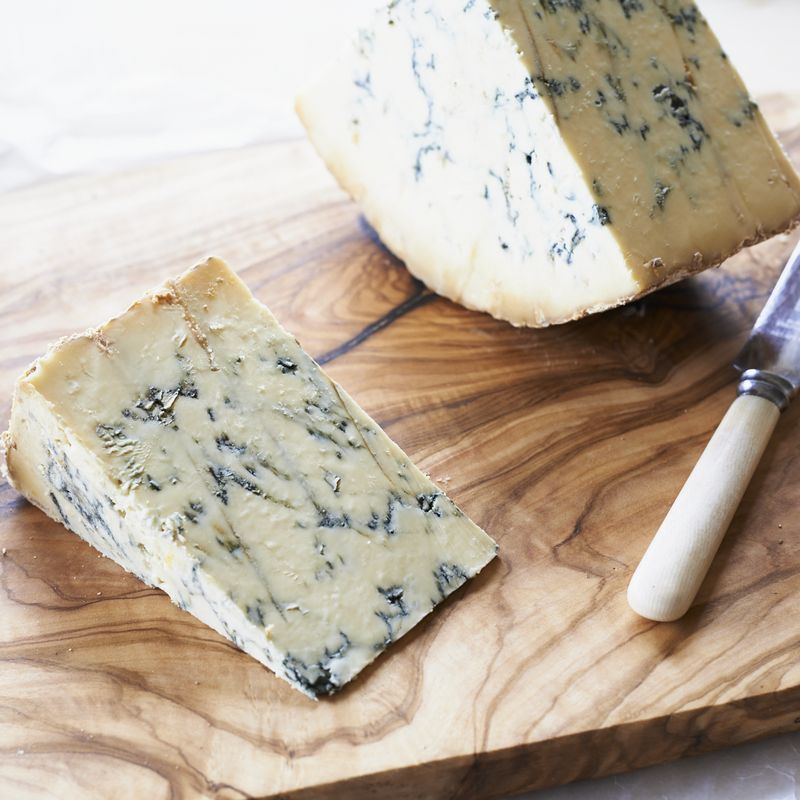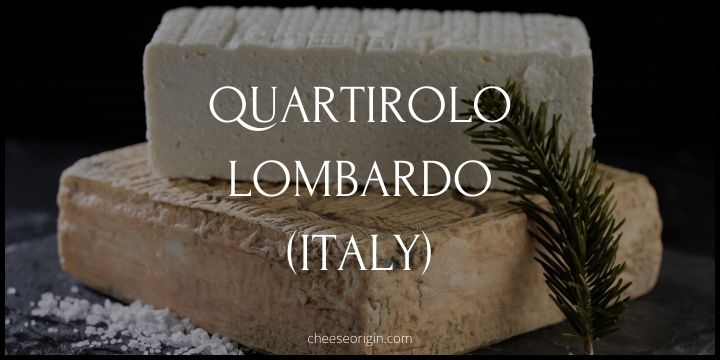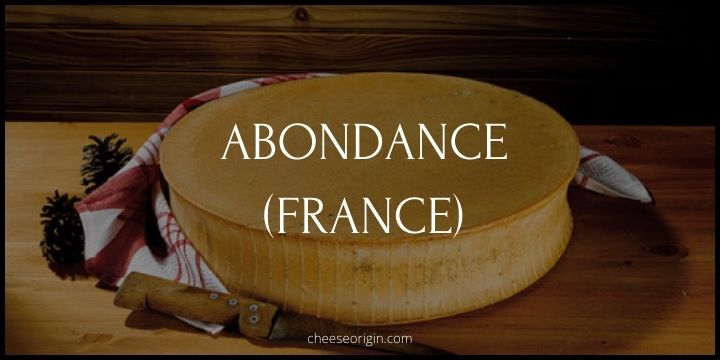What is Stichelton? The True Stilton’s Alternative

Dive into the world of artisanal cheese with Stichelton, the true alternative to Stilton. Born out of a desire to revive traditional English cheesemaking methods, Stichelton stands as a testament to the richness of pasteurized cheese. With its striking blue veins and complex flavor profile, it’s an unfiltered expression of heritage, craftsmanship, and taste.
Quick Facts About Stichelton
| Quick Facts | Details |
|---|---|
| Origin | Nottinghamshire, England |
| Cheese type | Blue cheese |
| Milk Source | Cow’s raw milk |
| Taste | Rich and creamy with a spicy finish |
| Texture | Moist, crumbly and creamy |
| Color | Pale yellow with blue-green veins |
| Aging time | At least 12 weeks |
| Certification | Non-PDO (Protected Designation of Origin) |
| Pairing | Port wine, sweet sherry, full-bodied red wines |
| Producer | Stichelton Dairy |
| History | A revival of traditional Stilton-making methods |
| Unique Feature | Made from unpasteurized milk |
| Serving Suggestion | Perfect for cheeseboards, salads, or melted-on steak |
| Availability | All year round |
What is Stichelton?

Stichelton, a name that harks back to the ancient English village of Stilton, is a unique and compelling blue cheese that tells a tale of tradition and innovation. Unlike its cousin, Blue Stilton, Stichelton distinguishes itself by using raw, unpasteurized milk and natural rennet, creating a flavor profile that is both familiar and distinct.
The creation of Stichelton is a labor of love, made by Joe Schneider on his Collingthwaite Farm in Nottinghamshire. The organic, unpasteurized Friesian-Holstein cow’s milk used in its production contributes to the cheese’s rich, creamy texture and complex taste. The cheese boasts a golden hue with veins of dark blue running through it, and its natural rind is a burnt white color.
Stichelton has juicy acidity and toasty, biscuity notes towards the rind, offering a range of flavors that can vary depending on the season and the age of the cheese. Stichelton is much more than just a cheese; it’s an experience – one that transports you straight to the green pastures of England’s dairy heartland.
This cheese is not just about taste, but also about preserving tradition. Since 1996, all Stilton has been made from pasteurized milk due to production rules. However, Stichelton remains the only traditional raw milk Stilton in the world, proving that old methods can coexist with modern regulations.
In essence, Stichelton is a testament to the craft of cheesemaking, a nod to the past, and a deliciously creamy, crumbly journey into the heart of English culinary tradition.
What Does Stichelton Taste Like?
Stichelton’s taste is a symphony of flavors, its character defined by a rich and creamy profile that is both dense and delicately spiced. The cheese boasts a nuanced combination of sweet and salty notes, with hints of grape and walnut, underpinned by a mellow fade.
The blue veins running through Stichelton add a subtle spice to the cheese, offering an exquisite counterpoint to its creaminess. The toasty, biscuity notes towards the rind further enhance its depth of flavor. This cheese is also known for its gentle blue note, which adds to its complexity and appeal.
Besides these, Stichelton also carries a trace of caramel-like sweetness and a lingering note of thick cream, making it a truly indulgent experience. There are flavors reminiscent of apples and underlying toasty notes, adding another layer to its multifaceted flavor.
In essence, Stichelton’s taste is a celebration of traditional cheesemaking, offering a unique array of flavors that are rich, complex, and utterly delicious.
Stichelton Tasting Notes
- Milk Type: Stichelton is made from raw, organic Friesian-Holstein cow’s milk.
- Texture: It has a moist, crumbly, and creamy texture which is quite appealing.
- Color: The cheese boasts a pale yellow color with striking blue-green veins running through it.
- Taste: Stichelton offers a nuanced sweet and salty flavor profile. There are also hints of toasted nuts and fruits, such as grapes and apples.
- Aroma: The cheese has a fresh, milky aroma with hints of earthiness due to the natural rind.
- Blue Note: The blue veins in the cheese introduce a subtle spice, adding an extra layer of complexity to its flavor.
- Rind Flavor: Towards the rind, there are toasty, biscuity notes that enhance the depth of its taste.
- Aftertaste: Stichelton has a lingering note of thick cream and caramel-like sweetness, making each bite a truly indulgent experience.
- Seasonal Variations: The flavor can vary depending on the season and the age of the cheese, with more mature versions offering a spicier finish.
What is the Difference Between Stichelton and Stilton?
| Aspect | Stichelton | Stilton |
|---|---|---|
| Milk Type | Made from raw, organic Friesian-Holstein cow’s milk. | Made from pasteurized cow’s milk. |
| Production Method | Uses traditional methods of production including hand ladling and the use of natural rennet. | Modern production practices are used, including mechanization and the use of microbial rennet. |
| Cheese Texture | Moist, crumbly, and creamy. | Smooth, creamy, and slightly crumbly. |
| Flavor Profile | A nuanced sweet and salty flavor profile with hints of toasted nuts and fruits, subtle spice from blue veins, and a caramel-like sweetness. | Rich and tangy, with a strong, fruity nuttiness. |
| Regulations | Not recognized as Stilton by the Stilton Cheesemaker’s Association due to its use of raw milk. | Recognized as Stilton by the Stilton Cheesemaker’s Association. Must be made in one of the three counties: Derbyshire, Leicestershire, or Nottinghamshire. |
| Pairings | Pairs well with Port wine, sweet sherry, full-bodied red wines, and dark chocolate. | Traditionally paired with Port wine or a good British ale. |
>> Click here to read our in-depth guide on Stilton
How to Eat Stichelton?
- Cheese board: Stichelton can be the star of a cheese board, surrounded by other contrasting cheeses like sharp Cheddar or creamy Brie. Add fruits like grapes or figs and a variety of nuts for texture.
- With Wine: Pair Stichelton with a glass of Port wine, sweet sherry, or a full-bodied red wine. The richness of the cheese complements the depth of these wines perfectly.
- On Toast: Spread Stichelton on a slice of warm, toasted bread for a quick and indulgent snack. The heat from the toast will slightly melt the cheese, enhancing its creaminess.
- In Salads: Crumble Stichelton over a fresh salad. The creamy, salty notes of the cheese work well with crisp greens and vinaigrette.
- Melted Over Steak: For a gourmet touch, melt a slice of Stichelton over a grilled steak. The flavors of the cheese blend wonderfully with the savory meat.
- With Dark Chocolate: For a unique dessert pairing, try Stichelton with a piece of dark chocolate. The bitterness of the chocolate balances the sweetness and creaminess of the cheese.
- In Pasta Dishes: Stir some crumbled Stichelton into a pasta dish just before serving. The cheese adds a creamy, tangy note that elevates the meal.
- With Fruit Compote: Pair Stichelton with a homemade fruit compote or chutney. The sweet and tangy flavors of the compote complement the rich, creamy notes of the cheese.
- In a Quiche: Incorporate Stichelton into your favorite quiche recipe. The cheese adds a wonderful depth of flavor to the dish.
10 Best Stichelton Substitutes
| Cheese | Origin | Description |
|---|---|---|
| Danish Blue Cheese | Denmark | Known for its sharp, salty flavor and creamy yet crumbly texture. |
| Gorgonzola | Italy | Offers a unique blend of creamy and crumbly textures with a rich, mild flavor and distinct blue veins. |
| Roquefort | France | A sheep’s milk cheese with a tangy, complex flavor and moist, crumbly texture. |
| Camembert | France | Soft, creamy, surface-ripened cow’s milk cheese. It’s mildly fruity and earthy. |
| Brie | France | Known for its creamy texture, edible white rind, and mild flavor. |
| Rogue River Blue | USA | An organic, cave-aged blue cheese wrapped in Syrah grape leaves that have been soaked in pear spirits. |
| Cashel Blue | Ireland | A semi-soft, creamy Irish cheese with a unique tangy flavor. |
| Urdina | Spain | A Basque country blue cheese, Urdina offers a strong, spicy flavor and a slightly crumbly texture. |
| Garstang / Nicky Nook Blue | UK | Creamy and mild blue cheese with a rich flavor. |
| Maytag Blue Cheese | USA | A hand-made, cave-aged cheese with a pungent aroma and a slightly crumbly texture. |
What Pairs Well With Stichelton?

Food that goes well with Stichelton:
| Category | Food Pairings |
|---|---|
| Breads | Sourdough, rye bread, baguette, walnut bread, whole grain crackers |
| Fruits | Apples, pears, figs, grapes, dried fruits like apricots and dates |
| Nuts | Walnuts, almonds, hazelnuts, pecans |
| Meats | Prosciutto, salami, roast beef, grilled steak |
| Vegetables | Celery, radishes, bell peppers, cherry tomatoes |
| Jams & Spreads | Fig jam, quince paste, apple chutney, honey |
| Desserts | Dark chocolate, fruit tarts, blueberry muffins, cheesecake |
| Cheeses (for a cheese board) | Aged Cheddar, Brie, Camembert, Gouda |
| Salads | Mixed greens with vinaigrette, beetroot salad, pear and walnut salad |
| Pasta Dishes | Blue cheese pasta, mushroom risotto, macaroni and cheese |
Also read: 11 Best Crackers that Pair Well with Cheese
Beverage that goes well with Stichelton:
| Category | Beverage Pairings |
|---|---|
| Wines | Port, sweet sherry, full-bodied red wines like Cabernet Sauvignon, white wines like Chardonnay |
| Beers | Stout, Porter, Belgian-style ales, IPA (Indian Pale Ale) |
| Spirits | Whiskey, Brandy, Cognac |
| Non-Alcoholic Drinks | Sparkling water, apple cider, grape juice |
| Tea | Black tea, Earl Grey, Chai |
| Cider | Dry apple cider, pear cider |
| Fortified Wines | Madeira, Marsala |
| Dessert Wines | Sauternes, Moscato, Ice Wine |
| Cocktails | Old Fashioned, Manhattan, Negroni |
| Coffee | Espresso, French press, Cold brew |
Also read: Top 10 Champagne & Cheese Pairings to Try at Least Once
Also read:
- What is Dubliner Cheese? From Irish Pastures to Global Tables
- What is Labneh Cheese? A Middle Eastern Culinary Secret
- What is Roncal? A Taste of Spanish Heritage
- What is Cheshire Cheese? A Timeless British Delight
- What is Fromage Blanc? Unveiling France’s Creamy White Delight
- What is Saint Andre? A Decadent Delight from Normandy
- What is Blue Castello? The Creamy Danish Delight





